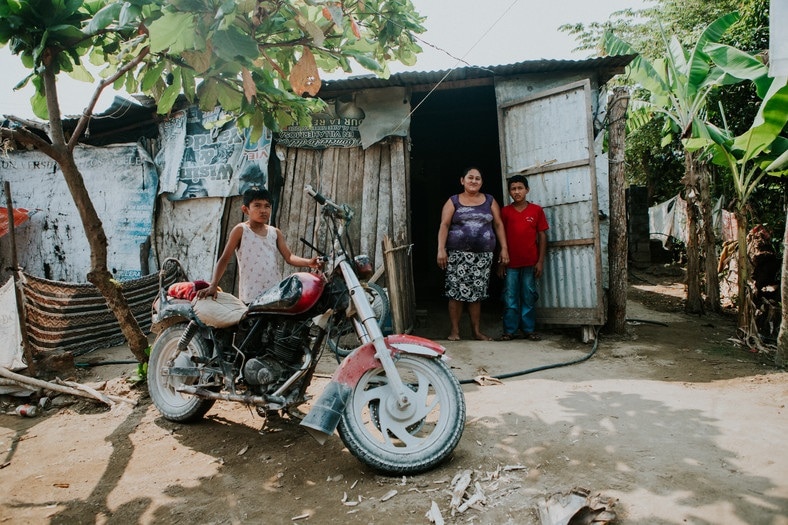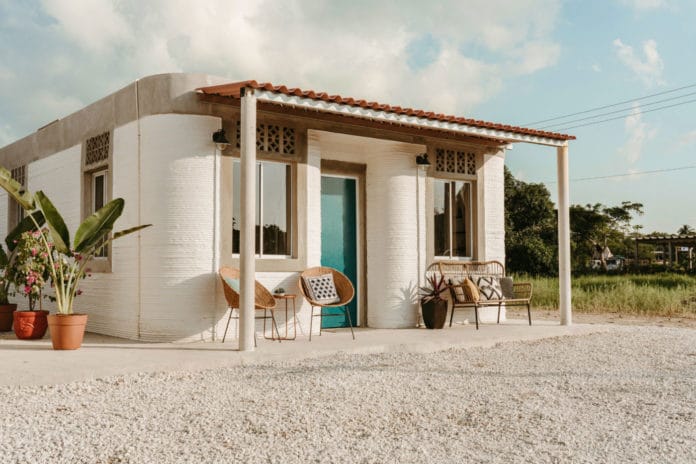In early 2019, the nonprofit New Story, along with ICON, a construction technologies company, and a local nonprofit, ÉCHALE, announced plans to print entire neighborhoods somewhere in Latin America. The project to build a residential area with 3D printing technology has been widely announced in May 2019, and the selected site is Tabasco. Six months later, the first details of the project appeared.
They have revealed the first set of homes located in Tabasco, Southeastern Mexico. Local residents are very poor and live in torn and dangerous huts. Also, traditional construction here is almost impossible due to unpredictable weather and limited resources. So New Story’s houses are expected to be a great solution to their housing problems.

Up to now, 2 out of 50 houses have been printed and handed over to residents. The area of each house is 500 square feet (about 46.5 m²). They have two bedrooms, a bathroom, a kitchen, a living room, a small terrace, as well as a small patio (an outdoor space).
According to the engineers, the cement frame of the house was printed with the Icon’s giant 3D printer Vulcan II in just 24 hours, after which the builders inserted windows and doors and installed the roof. Housing is connected to electricity and water supply.
The company says the families who will live in this community have been preselected based on need; in this community, the median family income per month is $76.50, some of the lowest-income families in Mexico as a whole.
The remaining 48 houses will be printed and handed over to residents in early 2020. New Story did not disclose the cost of building houses.
3D printing technology is one of the important inventions that change people’s lives. This technology is currently applied in many areas of life, from manufacturing body parts, military weapons to fashion clothes, even cars have also been printed using this technology.
The main advantage of 3D printing is rapid prototyping; with this technology, the time to create a finished product is only about 3-72 hours. In addition, the products created are fully detailed both inside and outside in detail in just one implementation that traditional methods cannot manufacture.
